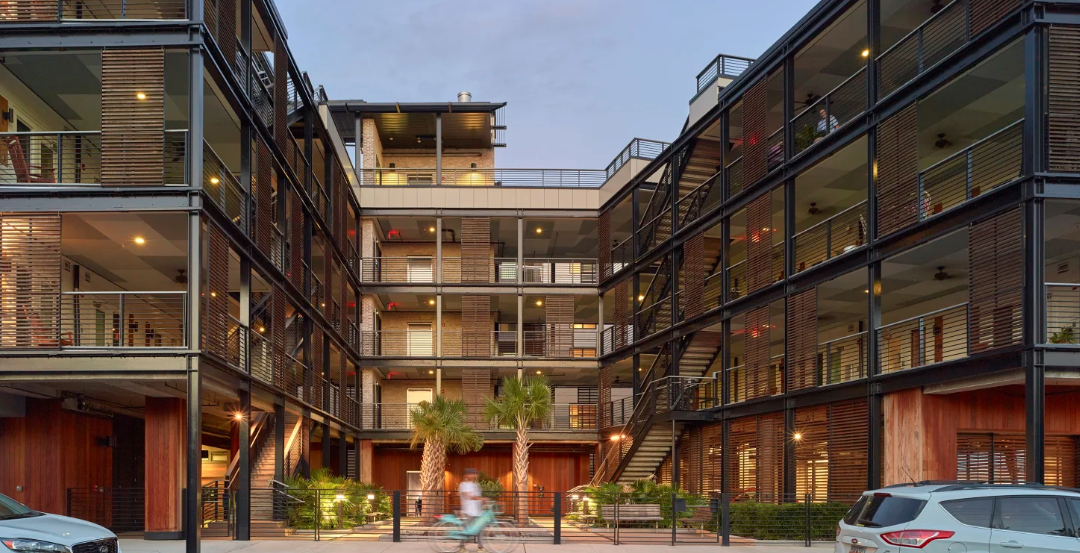The American Institute of Architects’ (AIA) Housing Knowledge Community in conjunction with the Office of the Secretary of the U.S. Department of Housing and Urban Development (HUD) are recognizing four housing designs with the 2019 AIA/HUD Secretary's Awards.
Each year, the AIA and HUD partner to celebrate projects that demonstrate affordable, accessible and well-designed housing, proving that good design is not exclusive. Projects were awarded by the seven-member jury in the following categories:
Excellence in Affordable Housing Design Award
Williams Terrace, Charleston, South Carolina | David Baker Architects
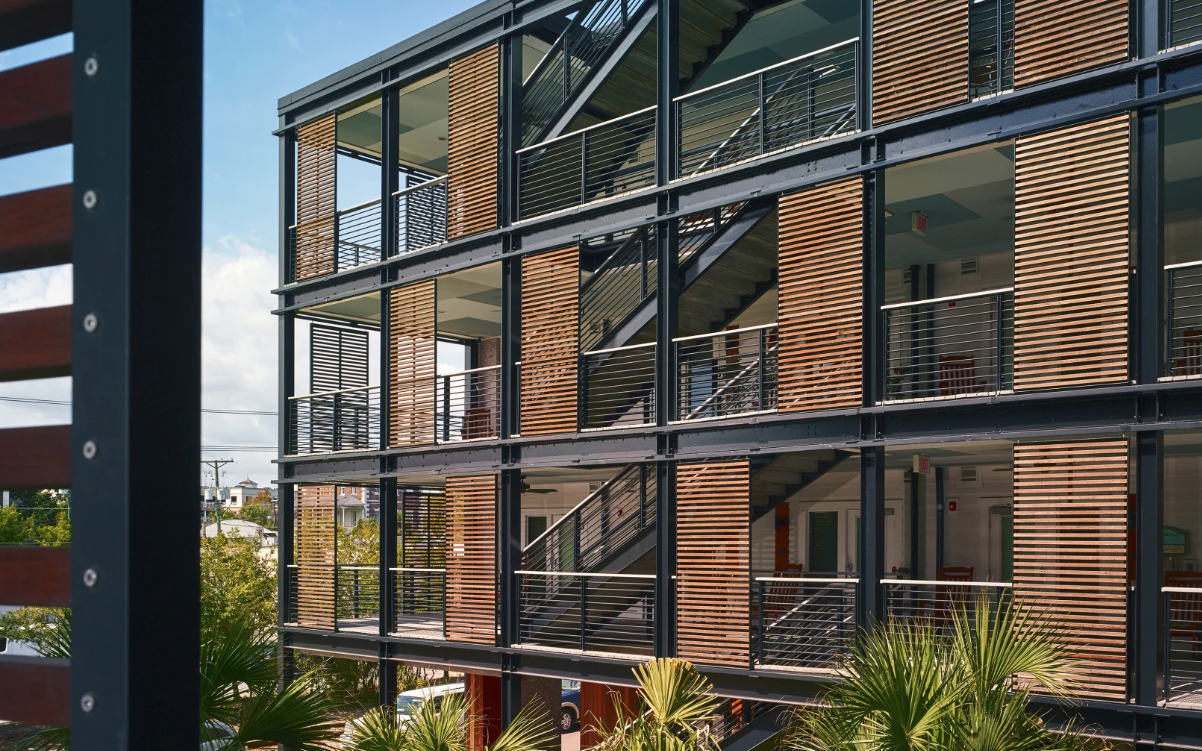 Photo: Luker Photography, courtesy AIA
Photo: Luker Photography, courtesy AIA
The first dedicated housing for Charleston, S.C.’s low-income seniors, Williams Terrace finally replaces housing that was lost to a hurricane in 1989. A collaboration between two firms that combined vernacular knowledge and expertise, the project delivers contemporary new housing that respects and honors the city’s historic fabric.
Working closely with the city’s housing authority, the team’s dynamic design meets the challenges of the site, which is situated in a high-velocity flood zone. The project echoes the iconic Charleston single house, with piazzas that function much like porches. These wide, open-air corridors provide external circulation and surround an airy central courtyard. Lined with ample seating, the corridors encourage interaction and extend the residents’ living space. Louvered shutters allow residents to adjust the amount of shade to their liking while creating an ever-changing façade.
 Photo: Luker Photography, courtesy AIA
Photo: Luker Photography, courtesy AIA
On the ground floor, the building’s “screen porch” fronts a new public park that is directly connected by a shaded public sidewalk. While the flexible space does not include any built-in furnishings due to city requirements, it can accommodate a variety of events. To avoid flood damage, a community room is located on the roof and offers views across the park and to the nearby harbor.
Much of Charleston’s public and affordable housing stock located in the suburbs, so this project is an important step in addressing one of the city’s largest challenges: keeping longtime residents downtown.
 Photo: Luker Photography, courtesy AIA
Photo: Luker Photography, courtesy AIA
Creating Community Connection Award
Anchor Place, Long Beach, California | The Architects Collective
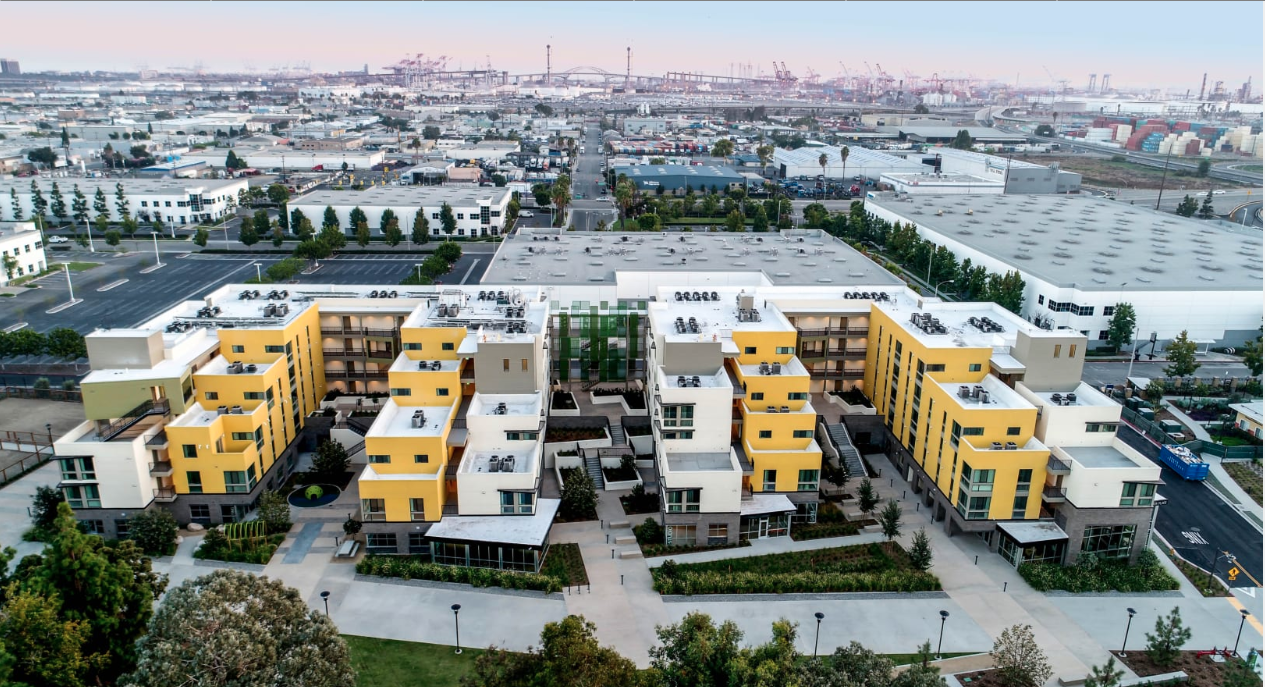 Photo: Panic Studio LA, courtesy AIA
Photo: Panic Studio LA, courtesy AIA
On a former Navy housing site in Long Beach, California, this project aims to break the cycle of homelessness through supportive housing and services for previously homeless veterans and their families. Anchor Place comprises four main components: a new building, renovation of an existing social hall, site-wide landscape, and street-level improvements.
The project reinforces a hierarchy of building and circulation, bolstering the legibility and connectivity of its campus context. With four wings, the design creates three courtyards that directly connect to community-focused amenities on the ground floor. A relocated bus stop connects residents to the city and world beyond, while the landscape helps lead those seeking on-site services directly to them.
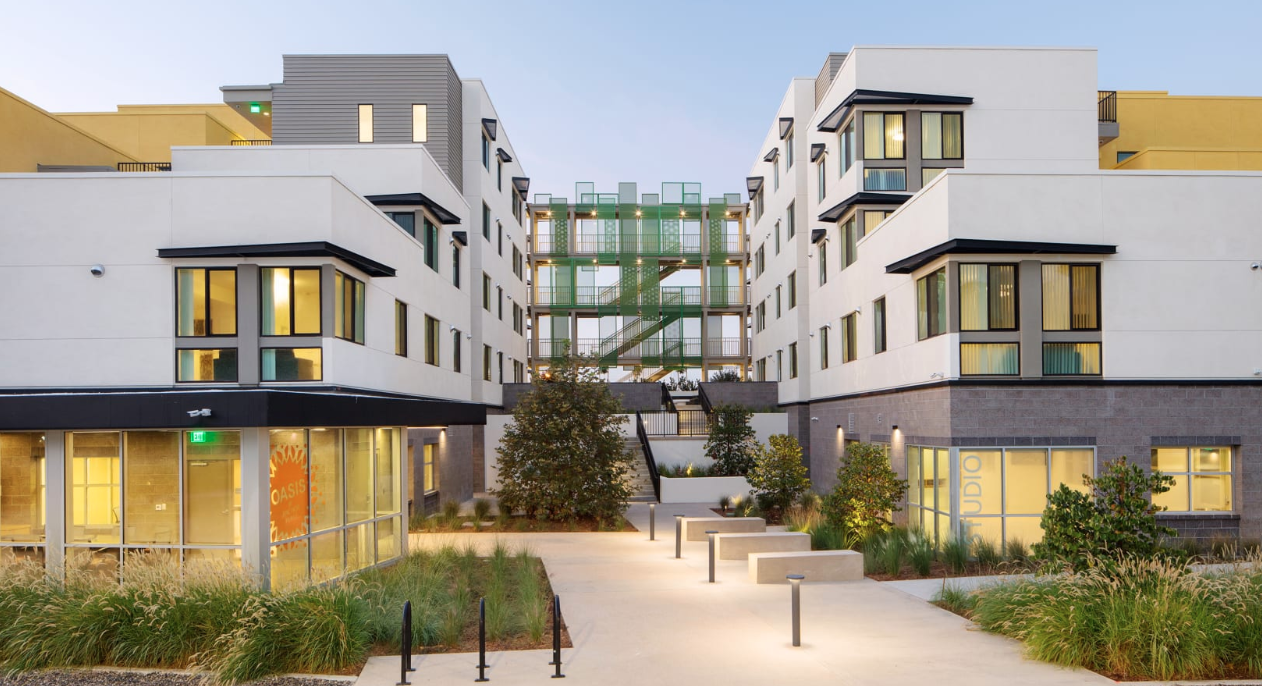 Photo: Panic Studio LA, courtesy AIA
Photo: Panic Studio LA, courtesy AIA
The client’s primary goal was to develop a multiunit housing project that fits synergistically within the existing campus and encourages residents to access provided activities and services. The project offers 120 affordable one-, two-, and three-bedroom units and on-site services that include case management, counseling, and life-skills training, among others. Responding to its context, the design creates a prominent edge on the campus’ southern boundary while extending the east-west pedestrian axis. Three courtyards are all programmed differently and offer space for children to play, social activities, or quiet contemplation.
A social impact report published annually by the community tracks key performance indicators that relate to residents’ physical and mental health, quality of life, and housing stability. In 2017, 69 percent of residents surveyed rated their general health positively, while 77 percent indicated they were happy living in the community.
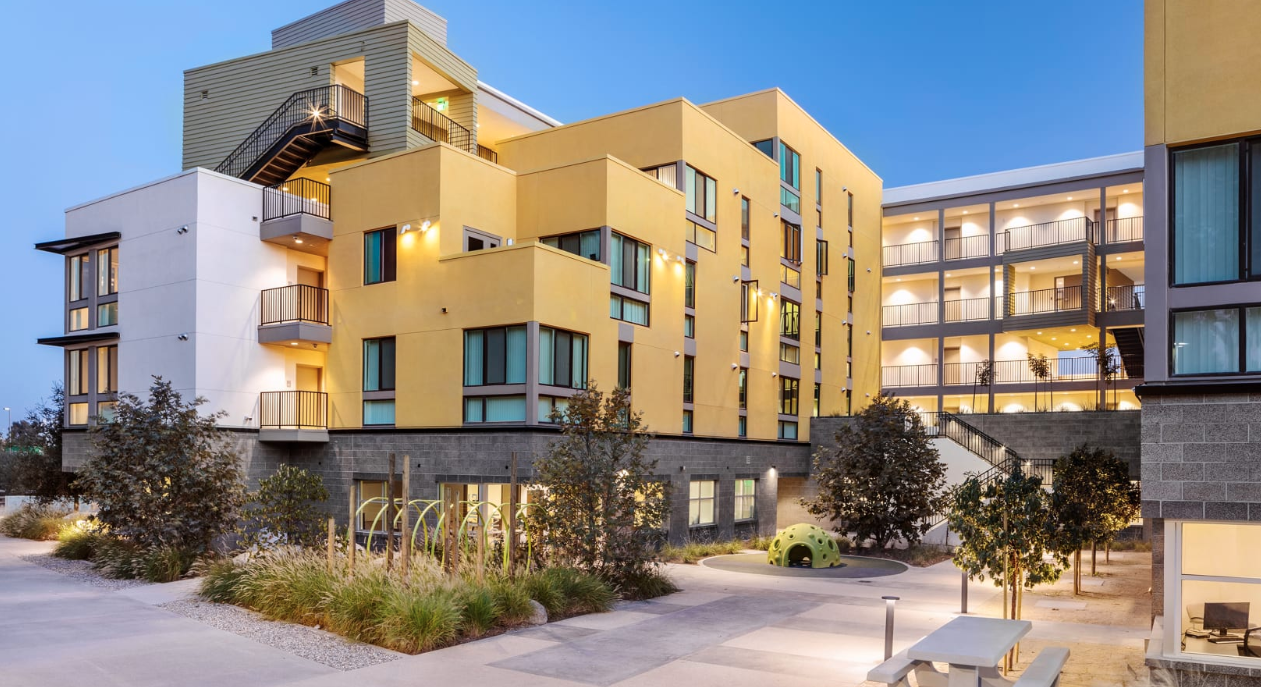 Photo: Panic Studio LA, courtesy AIA
Photo: Panic Studio LA, courtesy AIA
Community-Informed Design Award
8869 Avis, Detroit | Detroit Collaborative Design Center
 Photo: Ceara O'Leary, courtesy AIA
Photo: Ceara O'Leary, courtesy AIA
An anchor for The Alley Project, an initiative that promotes youth and community development through cultural and place-based initiatives in Detroit, 8869 Avis has transformed a neighborhood alley and surrounding lots into a graffiti gallery that deepens connections between neighbors and community assets. This renovation of an existing 2,400-square-foot building into a community center and the headquarters for Inside Southwest Detroit reflects the vision of the community it serves through its planning, execution, and everyday use.
The project was fostered through a robust relationship between Inside Southwest Detroit, the design team, and a diverse group of stakeholders. From the outset, the process engaged neighbors of all ages, including kids, grandparents, graffiti artists, and skateboarders, resulting in a community space that responds to resident needs and local culture. A series of community workshops and celebrations boosted the stakeholders’ agency and provided a number of venues for them to guide the overall design.
 Photo: Erik Paul Howard, courtesy AIA
Photo: Erik Paul Howard, courtesy AIA
8869 Avis delivers a flexible and authentic space highlighted by an enclosed “front porch” area adorned with ornamental geometric ironwork screens. The screens, fabricated by local metalworkers, echo fences found throughout the surrounding neighborhood and contribute equally to transparency and security. The building is wrapped with a mural designed by a late street artist and completed by an Inside Southwest Detroit program alumnus as a tribute.
Inside, wood-finish panels in bold colors and subtle patterns reference the exterior art and metalwork. Large metal doors lend flexibility to the space and pull double duty as functional writing surfaces for meeting notes or spur-of-the-moment artwork.
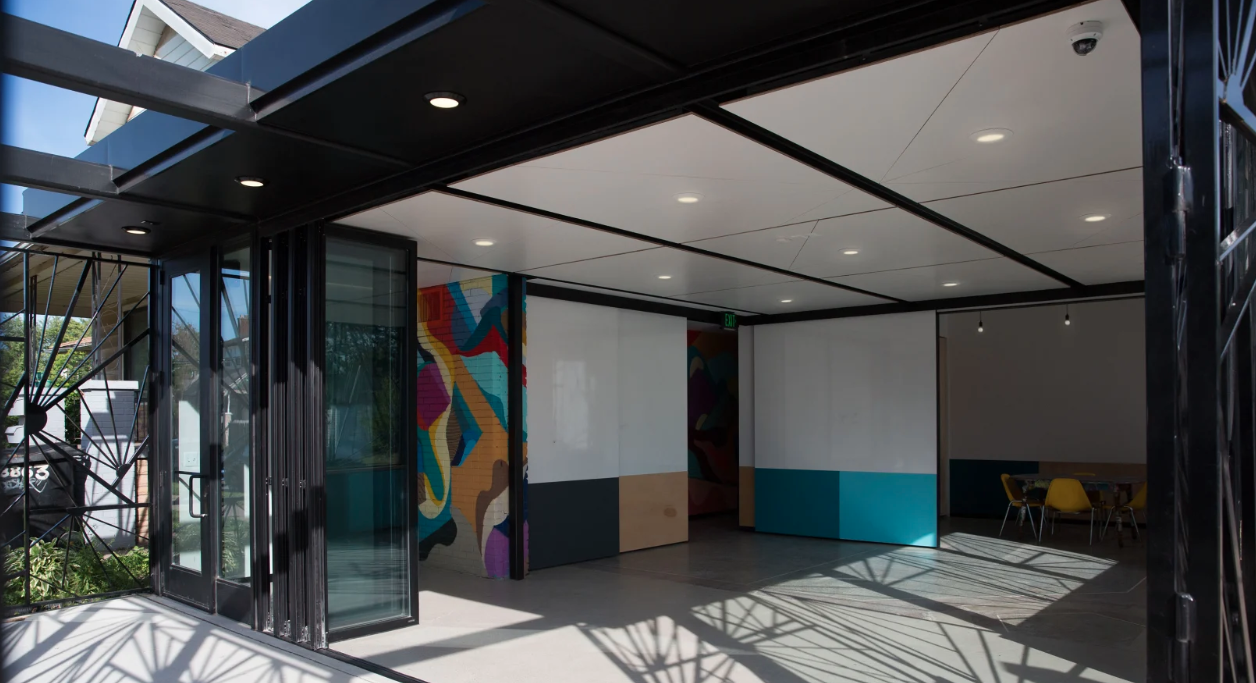 Photo: Erik Paul Howard, courtesy AIA
Photo: Erik Paul Howard, courtesy AIA
Excellence in Housing Accessibility - Alan J. Rothman Award
IFF Access Housing, Chicago | Landon Bone Baker Architects
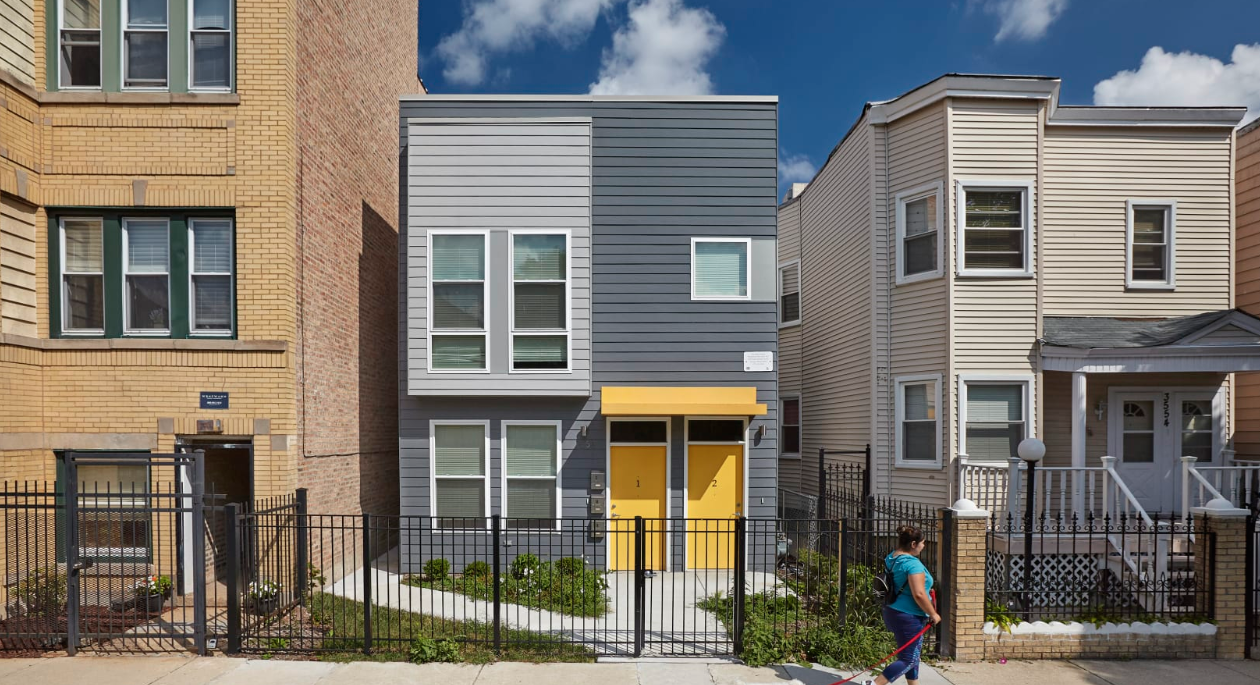 Photo: 2017 dimitre.com, courtesy AIA
Photo: 2017 dimitre.com, courtesy AIA
Capitalizing on vacant homes and infill lots scattered across a 2.5-mile footprint, IFF Access Housing delivers 25 affordable rental homes for people with disabilities while also helping to stabilize Chicago’s Humboldt Park and Logan Square communities. The project is set apart by its human focus and scale, which allow residents to thrive in charming homes that blend into the community rather than concentrating them on a single site.
In these two gentrifying neighborhoods, many of the rentals offered at the same price point were neglected and considered teardowns, though their lots were ideal for infill housing. Renovating the poorly maintained buildings presented the team with significant challenges, but rehabilitation was the most sustainable choice, reinforced by zoning restrictions and a need to preserve the existing urban fabric.
 Photo: 2017 dimitre.com, courtesy AIA
Photo: 2017 dimitre.com, courtesy AIA
Since disabilities can take many forms, each home is filled with universal and accessible features. Ground-floor units feature no-step thresholds and low peepholes, while wheelchair-friendly kitchens and thoughtfully designed bathrooms round out the amenities. Each unit includes design features that serve all potential residents, such as soothing color palettes for those with sensory issues and visual doorbells for the deaf.
For the new construction, the project capitalized on the existing context, which comprises a wide array of shapes, sizes, roof forms, and materials. Elements of the new homes directly relate to the surrounding buildings, but their modest forms belie the moniker of affordable housing and delight with their proportions, outdoors spaces, and colors.
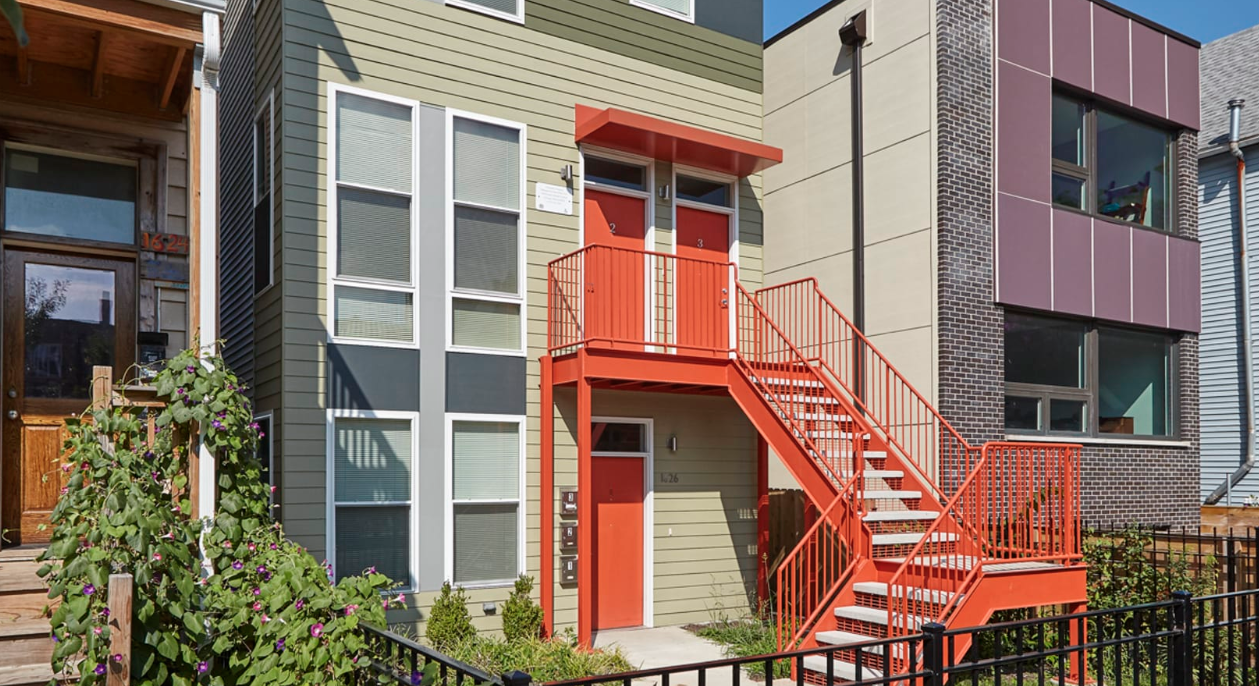 Photo: 2017 dimitre.com, courtesy AIA
Photo: 2017 dimitre.com, courtesy AIA
MORE ABOUT THE 2019 AIA/HUD HOUSING AWARDS
Related Stories
Urban Planning | Jun 15, 2023
Arizona limits housing projects in Phoenix area over groundwater supply concerns
Arizona will no longer grant certifications for new residential developments in Phoenix, it’s largest city, due to concerns over groundwater supply. The announcement indicates that the Phoenix area, currently the nation’s fastest-growing region in terms of population growth, will not be able to sustain its rapid growth because of limited freshwater resources.
Multifamily Housing | Jun 15, 2023
Alliance of Pittsburgh building owners slashes carbon emissions by 45%
The Pittsburgh 2030 District, an alliance of property owners in the Pittsburgh area, says that it has reduced carbon emissions by 44.8% below baseline. Begun in 2012 under the guidance of the Green Building Alliance (GBA), the Pittsburgh 2030 District encompasses more than 86 million sf of space within 556 buildings.
Industry Research | Jun 15, 2023
Exurbs and emerging suburbs having fastest population growth, says Cushman & Wakefield
Recently released county and metro-level population growth data by the U.S. Census Bureau shows that the fastest growing areas are found in exurbs and emerging suburbs.
Engineers | Jun 14, 2023
The high cost of low maintenance
Walter P Moore’s Javier Balma, PhD, PE, SE, and Webb Wright, PE, identify the primary causes of engineering failures, define proactive versus reactive maintenance, recognize the reasons for deferred maintenance, and identify the financial and safety risks related to deferred maintenance.
Mixed-Use | Jun 12, 2023
Goettsch Partners completes its largest China project to date: a mixed-used, five-tower complex
Chicago-based global architecture firm Goettsch Partners (GP) recently announced the completion of its largest project in China to date: the China Resources Qianhai Center, a mixed-use complex in the Qianhai district of Shenzhen. Developed by CR Land, the project includes five towers totaling almost 472,000 square meters (4.6 million sf).
Mixed-Use | Jun 6, 2023
Public-private partnerships crucial to central business district revitalization
Central Business Districts are under pressure to keep themselves relevant as they face competition from new, vibrant mixed-use neighborhoods emerging across the world’s largest cities.
Multifamily Housing | Jun 6, 2023
Minnesota expected to adopt building code that would cut energy use by 80%
Minnesota Gov. Tim Walz is expected to soon sign a bill that would change the state’s commercial building code so that new structures would use 80% less energy when compared to a 2004 baseline standard. The legislation aims for full implementation of the new code by 2036.
Student Housing | Jun 5, 2023
The power of student engagement: How on-campus student housing can increase enrollment
Studies have confirmed that students are more likely to graduate when they live on campus, particularly when the on-campus experience encourages student learning and engagement, writes Design Collaborative's Nathan Woods, AIA.
Multifamily Housing | Jun 1, 2023
Income-based electric bills spark debate on whether they would harm or hurt EV and heat pump adoption
Starting in 2024, the electric bills of most Californians could be based not only on how much power they use, but also on how much money they make. Those who have higher incomes would pay more; those with lower incomes would see their electric bills decline - a concept known as income-based electric bills.
Multifamily Housing | May 30, 2023
Boston’s new stretch code requires new multifamily structures to meet Passive House building requirements
Phius certifications are expected to become more common as states and cities boost green building standards. The City of Boston recently adopted Massachusetts’s so-called opt-in building code, a set of sustainability standards that goes beyond the standard state code.


